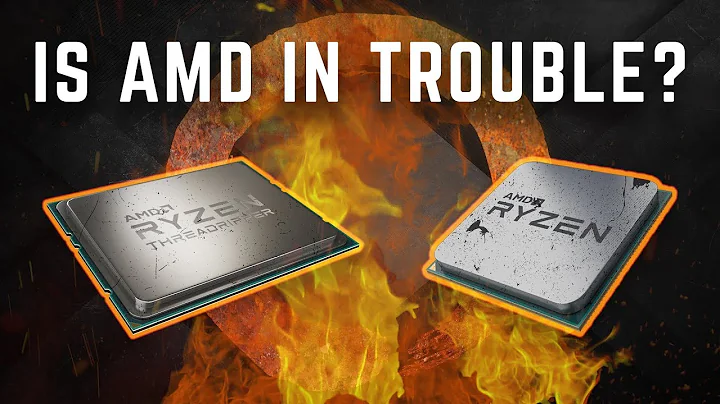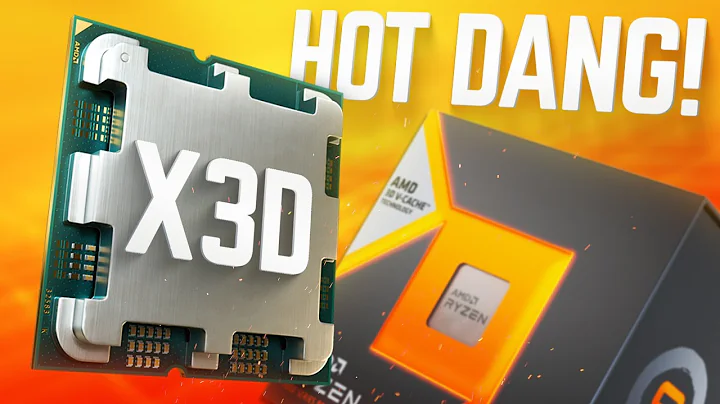Intel's Q3 2020 Financial Performance and Growth Strategies
Table of Contents:
- Introduction
- Financial Performance in Q3
- Priorities and Progress
- Improving Execution and Strengthening Core Business
- Extending Reach to Accelerate Growth
- Thoughtful Deployment of Capital
- Product Updates and Developments
- 11th Gen Intel Core Tiger Lake
- Third Gen Intel Xeon Scalable Project Ice Lake
- Discrete GPU DG1 and Next-Gen GPU DG2
- Diverse Range of AI Solutions
- Acquisitions and Collaborations
- Focus on Software and Optimization
- OneAPI and AVX-512 Acceleration
- Intel's Software Engineering Strength
- Accelerated Growth Strategy
- Opportunities in 5G and Autonomous Edge
- OpenVINO and Mobileye Business
- Capital Allocation and NAND Memory Business Sale
- Flexibility in Manufacturing and Partnerships
- Hybrid Architectural Approaches
- Strategic Collaboration with Equipment and EDA Providers
- Retaining Intel Manufacturing and Exploring Foundry Business
- Future Product Roadmap
- 2021 Client CPU Old Lake and Data Center CPU Sapphire Rapids
- Enhanced Superfin Technology
- Confidence in Leadership of 2023 Products
- Challenging Year and Financial Performance
- Impact of COVID-19 and Global Challenges
- Revenue Growth and Gross Margin Expectations
- Focus on Spending Discipline and Capital Management
- Conclusion
🌟 Highlights:
- Intel exceeded revenue and earnings expectations in Q3, driven by strong demand for consumer notebooks and continued cloud growth.
- The company launched 11th Gen Intel Core Tiger Lake, the world's best processor for thin and light notebooks, delivering significant performance improvements.
- Intel is targeting the qualification and volume ramp of its third Gen Intel Xeon Scalable Project Ice Lake by the end of Q4 and Q1, respectively.
- The company introduced its first discrete GPU DG1 and powered on its next-gen GPU DG2, aiming to expand its high-performance gaming capabilities.
- Intel prioritizes a diverse range of AI solutions and has made strategic acquisitions and collaborations to strengthen its portfolio.
- The company's focus on software and optimization includes the launch of OneAPI, AVX-512 acceleration, and improvements in software engineering.
- Intel's accelerated growth strategy takes advantage of opportunities in 5G networks, autonomous edge computing, and the OpenVINO and Mobileye business.
- The company plans to retain its manufacturing capabilities while exploring partnerships and assessing the possibility of reentering the foundry business.
- Intel looks forward to introducing new products in 2021, including the client CPU Old Lake and data center CPU Sapphire Rapids, leveraging enhanced superfin technology.
- Despite the challenging year, Intel aims to deliver its best performance in history, focusing on revenue growth, gross margin optimization, and value creation for shareholders.
👨💼 Article:
Introduction
Intel, a global leader in technology innovation, recently reported its financial performance for Q3, showcasing solid revenue and profitability growth. The company's commitment to improving execution, extending its reach, and thoughtful capital deployment has contributed to their success. This article provides a comprehensive overview of Intel's recent developments, product updates, growth strategies, and future plans.
Financial Performance in Q3
In Q3, Intel exceeded its revenue expectations by delivering $18.3 billion, driven by strong demand for consumer notebooks and continued growth in the cloud sector. The company also surpassed its bottom line expectation by achieving earnings per share of $1.11. Intel's revenue outperformed by $133 million, demonstrating their ability to navigate through the challenges posed by the current market conditions.
Priorities and Progress
Improving Execution and Strengthening Core Business
Over the past couple of years, Intel has focused on three critical priorities. The first priority is to enhance execution and strengthen their core business. In Q3, Intel launched the 11th Gen Intel Core Tiger Lake processor, which boasts exceptional performance and is optimized for thin and light notebooks. This processor outperforms competitor products, delivering impressive results in content creation, office workloads, and gaming with streaming capabilities.
Extending Reach to Accelerate Growth
Intel aims to expand its market reach to accelerate growth. They have made significant progress in their data center business, with the upcoming launch of the third Gen Intel Xeon Scalable processor, code-named Project Ice Lake. Qualification for this new processor is expected by the end of Q4, followed by volume ramps in Q1. Additionally, Intel is planning to release 100 Tiger Lake designs, twice the number initially anticipated, providing customers with a diverse range of options.
Thoughtful Deployment of Capital
Intel is committed to thoughtfully deploying capital to drive growth and create value for shareholders. They have made strategic acquisitions and collaborations to bolster their AI solutions portfolio. One notable acquisition is Havana Labs, which enables Intel to leverage its proof-of-concept demonstrations with major cloud providers. Intel's focus on software optimization, such as AVX-512 acceleration and oneAPI, further underscores their commitment to delivering exceptional value to customers.
Product Updates and Developments
Intel continues to innovate in the hardware space with several new product updates and developments. They recently introduced their first discrete GPU, DG1, which is shipping now and will be featured in systems from multiple OEMs in Q4. This marks a significant milestone for Intel in the high-performance gaming market. Moreover, they have powered on their next-generation GPU, DG2, indicating their commitment to expand into the enthusiast segment.
To cater to the evolving market demands, Intel acknowledges the need for diverse AI solutions and purposeful XPUs. By leveraging standard programming and incorporating outside IP, Intel aims to provide customers with a wide range of AI capabilities. This approach is complemented by collaborations with renowned companies such as Gili HD and Willa, further strengthening their offerings in this domain.
Focus on Software and Optimization
Intel recognizes the importance of software optimization and offers various solutions in this realm. Their AVX-512 acceleration enables enhanced performance in applications like molecular dynamics simulations. Furthermore, they have launched OneAPI, a unified programming model designed to simplify development across diverse architectures.
Intel takes pride in its extensive software engineering strength, boasting a team of 15,000 software engineers. This number surpasses the total employee count of rival company AMD and reflects Intel's commitment to optimizing software performance for their hardware. These efforts, along with the AVX-512 acceleration and advancements in software solutions, contribute to Intel's competitive advantage.
Accelerated Growth Strategy
Intel's accelerated growth strategy capitalizes on the opportunities presented by 5G networks and the intelligent autonomous edge. By leveraging OpenVINO and their Mobileye business, Intel is well-positioned to support the deployment of fully virtualized end-to-end 5G data Sessions. Their product portfolio, including Xeons, FPGAs, Ethernet, and Flex RAN, offers robust solutions that cater to the demands of 5G deployments.
The company's diversification extends to various sectors, such as high-performance computing instances. Oracle announced its collaboration with Intel to leverage Ice Lake in their cloud-based high-performance computing instances. These endeavors reflect Intel's commitment to customer-driven innovation and their ability to provide solutions for critical workloads and demanding applications.
Capitalizing on their extensive experience and expertise in virtualization, Intel ensures that their products are optimized for the intelligent autonomous edge. This includes the development and deployment of cutting-edge technologies like Xeons and FPGAs, which enable efficient edge computing and facilitate AI-powered applications.
Flexibility in Manufacturing and Partnerships
As Intel looks toward the future, they emphasize the importance of flexibility in manufacturing and partnerships. They acknowledge the value of hybrid architectural approaches that incorporate differentiated advanced packaging technology. This allows Intel to leverage the best technologies developed within and outside their organization.
Intel recognizes the strategic importance of collaboration with equipment and EDA providers, as well as third-party foundries. Rather than treating them solely as suppliers, Intel engages with these partners as strategic collaborators. This approach fosters innovation and drives the development of state-of-the-art technologies that meet the evolving needs of customers.
While maintaining their manufacturing capabilities, Intel is exploring the possibility of reentering the foundry business. This move would Align with the likes of TSMC's business model and offer Intel the opportunity to leverage their manufacturing expertise for external customers. However, the company will make well-considered decisions regarding investments in 7nm equipment and weigh the advantages of external foundry partnerships.
Future Product Roadmap
Intel's product roadmap showcases their commitment to delivering innovative and high-performance solutions. In 2021, the company plans to launch the client CPU Old Lake, targeting both desktop and laptop markets. Additionally, the data center CPU Sapphire Rapids is set to be introduced, offering significant capabilities enabled by Intel's enhanced superfin technology.
Looking ahead, Intel expresses confidence in their leadership and future products Slated for 2023. The company aims to deliver these products either by utilizing Intel 700, external foundries, or a combination of both. This approach ensures that Intel continues to maintain a robust product lineup and meet the demands of an ever-evolving market.
Challenging Year and Financial Performance
Despite the challenging global landscape, Intel remains optimistic about its financial performance. The company's commitment to delivering sustained growth has positioned them for success. By focusing on revenue growth, optimizing gross margins, and effectively managing capital, Intel anticipates achieving the best year in its 52-year history.
Intel acknowledges the impact of COVID-19 and geopolitical tensions on their business. However, they remain resilient and continue to prioritize the needs of their customers, employees, and stakeholders. Through diligent financial management and strategic decision-making, Intel aims to navigate through the uncertainties and emerge stronger.
Conclusion
In conclusion, Intel's recent financial performance, product updates, and growth strategies demonstrate their resilience and commitment to innovation. The launch of new processors, GPUs, and AI solutions positions Intel at the forefront of technological advancement. With a focus on software optimization, strategic collaborations, and future product developments, Intel aims to Shape the future of computing and deliver exceptional value to their customers.
FAQs:
Q: What are Intel's priorities for strengthening their core business?
A: Intel focuses on improving execution, strengthening their core business, extending their reach to accelerate growth, and deploying capital thoughtfully. They prioritize enhancing their product offerings, such as the 11th Gen Intel Core Tiger Lake processor and Third Gen Intel Xeon Scalable Project Ice Lake, to drive revenue and maintain their competitive edge.
Q: Does Intel emphasize software optimization?
A: Yes, Intel recognizes the significance of software optimization. They invest in AVX-512 acceleration and have launched OneAPI, a unified programming model that simplifies development across diverse architectures. Intel's strong team of software engineers ensures their software solutions are optimized for their hardware, enhancing overall performance.
Q: How is Intel diversifying its growth strategy?
A: Intel's accelerated growth strategy encompasses various sectors, including 5G networks and the intelligent autonomous edge. They leverage OpenVINO and their Mobileye business to support fully virtualized end-to-end 5G data sessions. Additionally, Intel's collaborations and acquisitions facilitate their entry into high-performance computing instances and the development of AI solutions.
Q: What is Intel's approach to manufacturing and partnerships?
A: Intel aims to be flexible in manufacturing by adopting hybrid architectural approaches and differentiated advanced packaging technologies. They foster strategic collaborations with equipment and EDA providers, as well as explore the potential of entering the foundry business. Intel recognizes the value of external partnerships to diversify their offerings and align with market demands.
Q: What can we expect from Intel's future product roadmap?
A: Intel plans to introduce the client CPU Old Lake and data center CPU Sapphire Rapids in 2021. These processors will leverage enhanced superfin technology to deliver significant capabilities and meet the evolving needs of customers. Looking ahead to 2023, Intel expresses confidence in their future product lineup, which may utilize Intel 700, external foundries, or a combination of both.


 1.4M
1.4M
 16.95%
16.95%
 5
5


 27.1K
27.1K
 9.92%
9.92%
 22
22


 < 5K
< 5K
 17.89%
17.89%
 4
4


 15.6K
15.6K
 66.97%
66.97%
 4
4


 874.9K
874.9K
 22.98%
22.98%
 12
12


 5.5K
5.5K
 62.75%
62.75%
 7
7


 11.1K
11.1K
 38.23%
38.23%
 2
2


 < 5K
< 5K
 13
13


 < 5K
< 5K
 31.34%
31.34%
 4
4


 61K
61K
 31%
31%
 3
3


 247.3K
247.3K
 26.72%
26.72%
 5
5


 14.5K
14.5K
 62.5%
62.5%
 2
2


 170.2K
170.2K
 45.37%
45.37%
 12
12
 WHY YOU SHOULD CHOOSE TOOLIFY
WHY YOU SHOULD CHOOSE TOOLIFY



































